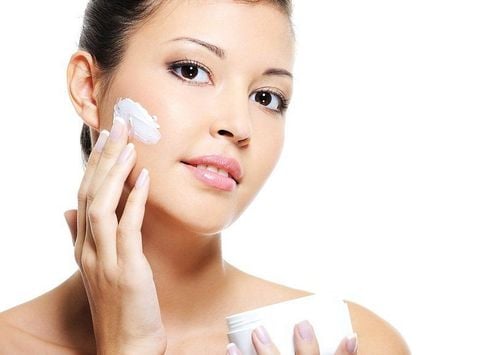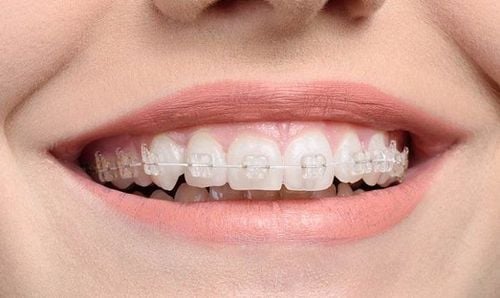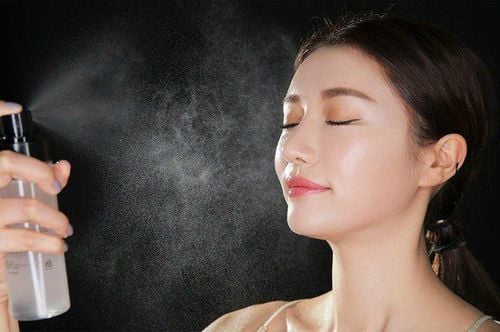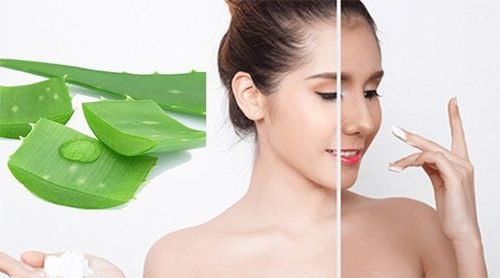This is an automatically translated article.
Dry skin occurs when the skin does not retain enough moisture. This can happen due to frequent bathing, using strong soaps, aging or certain medical conditions. And for those in colder climates, it can come from the cold, dry air of winter. So is there a safe and effective way to moisturize the skin? The following article will provide detailed information on how to moisturize, and moisturizing products for the skin.1. How to moisturize your skin
As more and more products are available to moisturize your skin, there are more and more ways to treat dry skin.Dry skin occurs when the skin does not retain enough moisture. This can happen due to frequent bathing, using strong soaps, aging or certain medical conditions. And for those in colder climates, it can come from the cold, dry air of winter.
However, you don't have to accept rough, flaky skin as a result of aging or the climate; There are several ways to treat dry skin. Moisturizer tops the list. Kenneth Arndt, professor of dermatology at Harvard Medical School, says: "Think of moisturizer as a barrier between your skin and the dry, cold air.
Ingredients that can hydrate your skin Skin moisturizing products, Moisturizing Cream, which helps to rehydrate the top layer of skin cells and seals in water, is one of the best ways to condition it. dry skin treatment. They contain three main types of ingredients:
Humectants. These substances help absorb moisture. These include ceramides (pronounced ser-A-mids), glycerin, sorbitol, hyaluronic acid, and lecithin. Wounds. These ingredients - including petroleum jelly, silicone, lanolin and other oils - help keep moisture in the skin. Emotional substance. These products contain oils, water, and emulsifiers to keep the two from separating. They are lighter and easier to apply than oils or oils. Many commercial moisturizers contain both emollients and humectants, such as linoleic, linolenic, and lauric acids. In general, the thicker and more greasy a product is, the more effective it is at moisturizing your skin. Some of the most effective and least expensive are mineral oils and plant-based alternatives, and moisturizing oils, including vegetable oils. Because they do not contain water, they are best used when the skin is still damp after bathing, to retain moisture.
Moisturizers designed to moisturize your skin contain water as well as oil, in varying proportions. These often include both humectants and emollients and can be applied to the skin throughout the day.
What else can you do to hydrate your skin? Use a humidifier in winter. Set it to about 60%, a level enough to moisturize your skin. Stop bathing for a short time. Limit bathing to 5 to 10 minutes a day. If you shower more, you can strip away more of the oil from your skin and cause your skin to lose moisture. Use warm rather than hot water, which can strip away the natural oils. Limit soap use. Consider soap-free cleansers. Stay away from deodorant soaps, scented soaps, and alcohol-based products, which can strip away the natural oils. Use fragrance-free laundry detergent and avoid fabric softeners. Be gentle with your skin. Keep away from sponges, scrubbing brushes and rough towels. For the same reason, pat or pat (don't rub) your skin when the towel is dry. Don't scratch. Most of the time, a moisturizer can control the itch. You can also use cold packs or ice packs to relieve itching. Trim your wardrobe. If you find your clothes contain wool, acrylic, or other fabrics that irritate your skin, throw them away.

Hạn chế sử dụng xà phòng là cách cấp ẩm cho da một cách tự nhiên
2. Skin moisturizing products: Choose for softer skin
A skin moisturizer or moisturizer that helps prevent and treat dry skin. They can also protect sensitive skin, improve skin texture, and cover imperfections. You may need to try many different products to find the right moisturizer for you.At its most basic level, moisturizers hold water in the outermost layer of the skin. Most moisturizers are water, cream, gel, and serum. They contain ingredients that draw water into the skin (humectants) — such as glycerin, lactic acid, or urea — and other ingredients that smooth the skin (emollients) — such as lanolin, sunflower oil, and jojoba oil. .
You may want to try different moisturizers to find the right one for you. You may decide to use an eye and neck cream and a lotion that is easier to blend for the rest of your body. You may also want to choose moisturizers that are easy to apply and leave no residue.
The best moisturizer for you depends on many factors, including your skin type, your age, and whether you have specific medical conditions, such as acne. Consider the following:
Normal skin. Normal skin is neither too dry nor too oily. To maintain this natural moisture balance, use a water-based moisturizer that has a light, non-greasy feel. These moisturizers often contain lightweight oils or silicone-based ingredients, such as cyclomethicone. Dry skin. Dry skin tends to be flaky, itchy, or rough. To restore moisture to dry skin, choose a heavier oil-based moisturizer that contains ingredients that help retain water. If you've tried a moisturizer but still feel dry - especially on your legs, feet, arms and hands - look for one with lactic acid or lactic acid and urea in it. For very dry and chapped skin, look for petroleum-based ointments (Vaseline, Aquaphor). They are more effective than lotions and more effective at reducing water loss in the skin. If this product is too greasy to use during the day, apply it before bed.
Oily skin. The skin is shiny, oily and prone to breakouts and breakouts. Such skin still needs moisture, especially after using skin care products that remove oil and dry the skin. A light moisturizer can also help protect your skin after washing your face. Lotions typically contain a higher percentage of water than lotions, are easier to apply, and have less risk of aggravating acne-prone skin. Choose a lightweight, water-based product that's labeled oil-free or hypoallergenic, which means it won't clog pores. If you have acne, avoid using products containing mineral oil, cocoa butter, or coconut oil on your face. If your skin is very oily, try using sunscreen instead of moisturizer.
Combination skin. Combination skin has dry and oily areas. For example, the forehead, nose, or chin may be oily, but the cheeks are dry. Try a medium-weight lotion with a broad spectrum sunscreen. Or use a light moisturizer for your face and a heavier one for your arms and legs. Sensitive skin. Sensitive skin is prone to irritation, redness, itching, or rashes. Look for moisturizers that contain skin-soothing ingredients, such as chamomile or aloe. Choose gentle products that are labeled as hypoallergenic, fragrance-free and for sensitive skin. Note that products that are labeled unscented can still irritate your skin, as they may contain masking fragrances. Also avoid products that contain acids, which can irritate sensitive skin. Mature skin. As you age, your skin tends to become thinner, drier, less elastic, and less able to protect itself from damage. To keep your skin soft and hydrated, choose an oil-based moisturizer that contains petroleum-based ingredients, which help retain moisture. Moisturizing can smooth wrinkles. To prevent flaking skin, you can choose products that contain antioxidants or alpha hydroxy acids. Moisturizers are often the foundation for anti-wrinkle creams, which add retinoids, antioxidants, peptides, or other ingredients.
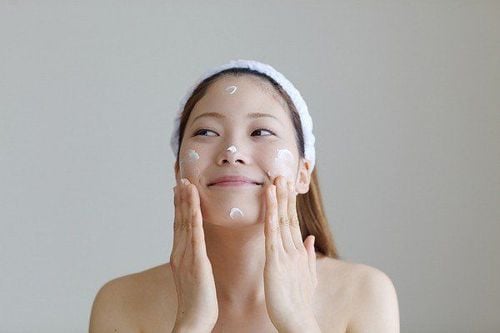
Bạn cần chọn kem dưỡng ẩm phù hợp với loại da của mình
Get ready to experiment. Find a moisturizer that suits your skin type and leaves your skin looking soft. You may need to try multiple brands with different ingredients before you find one that works for you. Protect yourself from the sun. Apply sunscreen daily all year round. Use a broad-spectrum sunscreen with an SPF of 30 or higher. Reapply every two hours and after swimming or sweating. You can choose moisturizers or cosmetics that contain sunscreen. Apply any topical medication you're using to your skin before applying moisturizer, sunscreen, or cosmetics.
It is not necessary to buy the most expensive brand. Just because a moisturizer is expensive doesn't mean it's more effective than a cheaper product. Many of the ingredients added to these more expensive brands are of questionable value and may include perfumes, dyes, or other ingredients that don't help moisturize and protect the skin. Wash often and gently. Wash your face daily and after sweating. Use warm (not hot) water and a gentle cleanser, or just use water. When bathing, avoid using loofahs and pumice stones. Use unscented bath oils and mild soaps or shower gels with added moisturizers. Wash. Limit bathing to no more than once a day and to no more than 5 to 10 minutes. Apply moisturizer while skin is still damp. After bathing, showering, or shaving, pat skin dry with a towel to allow moisture to remain. Then apply a moisturizer to keep the water in the skin. Depending on your skin type, you may want to reapply your moisturizer two to three times a day or more often if needed. Moisturize your hands every time you wash them. Although often overlooked, your hands are exposed to more irritants than any other part of your body. Use heavy creams and oils appropriately. Do not use heavy creams on your face unless you are extremely dry. You can use baby oil or a heavier lotion for your feet, hands, and feet because those areas tend to be drier. Apply moisturizer after medicated creams. If you use medicated creams such as corticosteroids or tacrolimus (Protopic), wait at least 30 minutes before applying moisturizer. Check your medication packaging for specific instructions. Not all moisturizers meet their advertised claims or even contain all of their advertised ingredients. The Food and Drug Administration does not regulate cosmetics - including moisturizers - as rigorously as it does drugs.
If regular moisturizing doesn't improve your skin's condition or you notice new skin problems, see your doctor or dermatologist. Ask about creating a personalized skin care plan based on your skin type and any skin conditions you may have.

Lưu ý rằng bạn nên bôi kem dưỡng ẩm sau các loại kem thuốc
3. 10 effective natural ways to hydrate your skin
Dry skin can make you look dull and aged. It is essential to provide moisture to the skin to keep it looking healthy. But it's not just people with dry skin who need to do this. Not many people know that even people with normal, combination and oily skin must moisturize their skin.No matter what season it is, a moisturizer is essential for beautiful skin. Using a moisturizer every day can make your skin brighter and provide deep moisture to the skin. The sun's UV rays along with the seasonal changes in weather can cause a lot of damage to the skin, causing it to become very dry. This dryness also leads to itching, dry patches and many other skin problems. If you want your skin to not suffer from these problems, you need to moisturize daily.
While there are many types of moisturizers available in retail stores and online stores, you can make them with some ingredients you already have at home. These homemade moisturizers contain fresh nutrients and can deliver an amazing
3.1 effect. Moisturize your skin with Coconut Oil OR baby oil OR olive oil OR castor oil OR jojoba oil OR mineral oil OR sesame oil. You can choose whatever is available at home.
What you have to do:
Apply the oil all over your body and massage for a minute or two. By massaging, the oil will quickly penetrate your skin and won't stain your clothes. You can leave it overnight and shower again the next morning for fresh skin, or use it after showering. Do this 2-3 times a week Why does it work?
Dry and itchy skin needs deep moisturizing and what's better than using natural oils? Many of the oils mentioned above provide excellent soothing effects for all skin types. They are rich in vitamin E, vitamin A and fatty acids. They lock in moisture and provide the skin with the nutrients it needs for optimal skin health. With regular application, you will soon notice smoother and softer skin.
3.2. Moisturize your skin with honey You will need
Organic Honey
What you must do
Apply a layer of honey to the affected area eg your face or arms. Leave the honey on for 15-20 minutes. Rinse with warm water and pat dry. How often should you do this
Repeat this twice a week or more often if you have very dry skin.
Why it works
Honey is one of the best natural moisturizers for your skin. It is a natural emollient and humectant. It penetrates the deeper layers of the skin to moisturize. It also helps to unclog your skin's pores and restore dull skin back to its natural glow with its antioxidants.
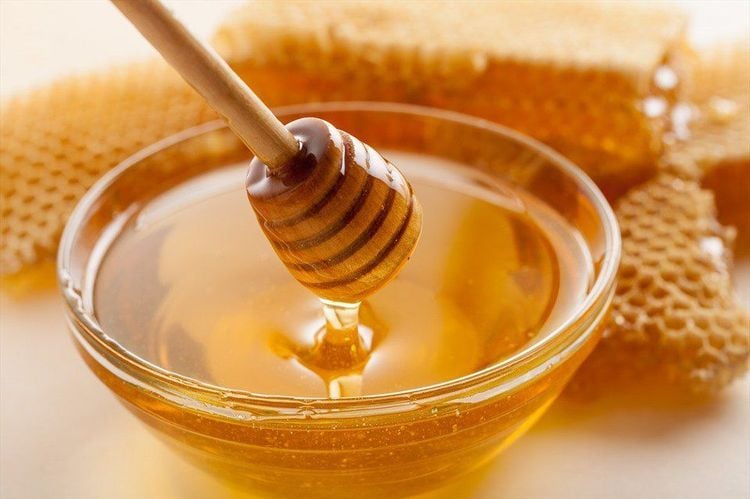
Mật ong hữu cơ là chất cấp ẩm cho da hiệu quả
Aloe vera leaves
What you must do
Peel off the outer part of the leaf and cut off the inner stem that secretes the gel. Extract this gel and make sure you grind it thoroughly and apply it as soon as possible. Let dry for 10-12 minutes and then rinse with warm water. You can store the remaining aloe vera gel in an airtight container in the refrigerator for a few days.
How often should you do this?
You can repeat this once every 2-3 days.
Why does it work?
Keep an aloe vera plant on your balcony. It develops very quickly and in no time you'll have an at-home moisturizer at your disposal! Aloe vera gel contains many nutrients such as vitamin E and vitamin A which are very good for the skin. It also contains plant steroids with anti-inflammatory properties. This will help reduce the itching sensation when the skin is dry.
3.4. Avocado as moisturizer You will need
An avocado
What you must do
Cut open the avocado and remove the pulp inside. Gently grind this mixture so that there are no lumps left. Apply this on the affected area and leave it on for about 10 minutes. Rinse with warm water. How often should you do this
Repeat this twice a week.
Why it works
All your dry and flaky patches will soon be gone with this home remedy. Avocados are packed with nutrients, vitamins and minerals like fatty acids, carotenoids, vitamin C and vitamin E. These will nourish your skin and also protect it from the damaging effects of free radicals. Vitamin C supports collagen and elastin synthesis so your skin is firm and youthful
3.5. Cocoa Butter You will need
Cocoa butter
What you must do
Scrape the cocoa butter and apply it gently to the skin. The butter will melt on friction and spread across your skin. Leave it on. If you have trouble melting butter, put a few pieces of butter in a double boiler for a few minutes and then apply it to your skin.
How often should you do this
Use this to moisturize your skin twice a week.
Why it works
This natural butter extracted from cocoa beans helps increase skin elasticity and moisturizes. This is due to the saturated fat it contains (8). The polyphenols in cocoa have antioxidant and anti-inflammatory properties. They help reverse damage caused by UV exposure and have anti-aging effects.
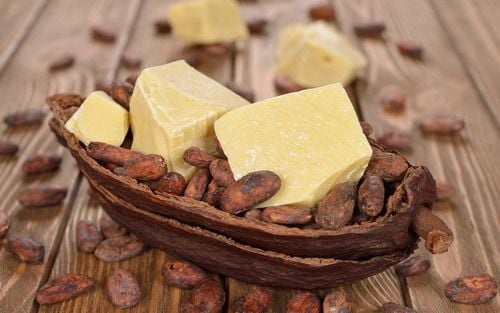
Bơ cacao là chất cấp ẩm cho tự nhiên và lành tính
Organic Shea Butter
What You Must Do
Take some shea butter and rub it between your hands to melt it. Apply this on all affected areas. Massage for a few minutes for it to be absorbed into the skin. How often should you do this
Use this every night, before going to bed.
Why it works
Shea butter is a great skin moisturizer because it is rich in saturated fatty acids. It also has
3.7 healing and anti-aging properties. Mango butter
You will need
Mango butter
What you must do
Apply butter all over your skin and massage. Leave it on. How often should you do this on one occasion
Use every day or every other day.
Why it works
Rich in antioxidants and compounds that help hydrate your skin, mango butter is fast becoming the next big thing in the skincare industry. It is easily absorbed into the skin and leaves no greasy residue.
3.8. Cucumber Juice You will need
1 large 8 oz cucumber. paraffin wax 2 oz. carrier oil (almond oil works best) What you have to do
Peel the cucumbers and cut them in half lengthwise. Remove the seeds and puree the rest of the cucumber. Heat paraffin wax in the microwave for 90 seconds to melt. To do this, add carrier oil and grated cucumber. Mix thoroughly. Use this to massage and moisturize the skin. Store the remainder of the mixture in an airtight container.
How often should you do this on one occasion
Use this every night.
Why it works
Cucumber is mostly water, and when used in a skin moisturizer, it hydrates the skin. It is a soothing agent that replenishes and rejuvenates skin
3.9. Beeswax You will need
1 cup olive oil 1/2 cup coconut oil 2 oz. Beeswax 5-6 Vitamin E Oil Capsules What You Must Do
In a glass container, add both the oil and the beeswax. Now, heat all these ingredients in a double boiler over medium heat. Mix every few minutes to get an even mixture. When all the beeswax has melted and mixed with the oil, remove the can and let it cool. Before the mixture solidifies, add vitamin E oil from the capsules and stir well. Apply this beeswax lotion to the skin and massage it thoroughly. Leave it overnight. Seal the glass container and store it for future use.
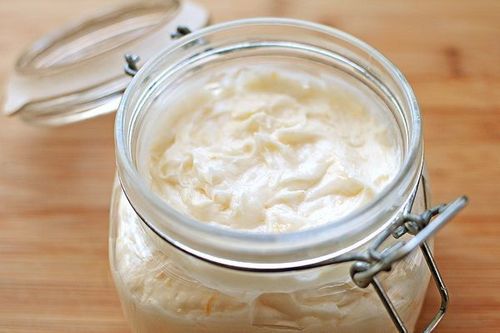
Bạn có thể tự làm kem dưỡng da bằng sáp ong để cấp ẩm cho da
Use this every alternate day.
Why does it work?
Beeswax softens the skin and also improves skin elasticity. Coconut oil and olive oil are also great moisturizers. They also have antioxidant and anti-inflammatory properties.
These easy-to-make, cost-effective moisturizers can help you look beautiful and young. Why spend a lot on chemical-laden products when you can get the same benefits for much less!
Please dial HOTLINE for more information or register for an appointment HERE. Download MyVinmec app to make appointments faster and to manage your bookings easily.
References: mayoclinic.org, health.harvard.edu, stylecraze.com




